| |
| | | |
|
| |
| |
| |
| |
| |
| |
| |
| |
| |
| | | |
| | |
| |
| | Search by destination | |
| To search the database for the destination of your choice, use the boxes below. | | |
| |
| Select Destination | | |
| |
| |
| Location Category | | |
|
| |
| Location Activity | | |
| |
| |
 | advanced search | |
| | | | | | | |
| | |
| |
| |
| |
|  | |
| |
|
| 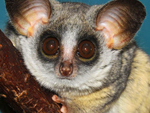 |
| Kiunga Marine National Reserve | |
| |
A pristine string of rugged coral isles, ringed by rainbow coral reefs and a part of the enchanted Swahili realm of the Lamu archipelago, this Reserve offers living coral gardens, sculpted coves, wheeling seabirds, rare turtles, magical dugongs and an underwater world of unbelievable colour, discovery and vibrancy. The Reserve is part of the Lamu archipelago, a cluster of hot low-lying desert islands that run for some 60 km parallel to the coastline of northern Kenya.
| |
| |
| | | |
| continue... | |
| |
| | | | |
|
| 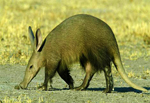 |
| Arabuko-Sokoke Forest Reserve | |
| |
This cool, shaded retreat is one of the last remnants of Africa’s once huge coastal forests. It hosts some of Africa’s most rare and unusual creatures, and makes the ideal escape from the brilliance of the Indian Ocean coast. The mixed forest (mixed, Brachystegia forest and Cynometra forest) is rich in plant species, butterflies and mammals. The Brachystegia offers the widest range of birds, while the Cynometra forest offers the densest growth and holds the widest range of ... | |
| |
| | | |
| continue... | |
| |
| | | | |
|
|  |
| Buffalo Springs National Reserve | |
| |
Buffalo Springs takes its name from its pools and springs of fresh clear water which bubble in its midst, acting as a magnet for large congregations of wild life, especially during the dry season (June to October and December to April) and is a favourite watering hole for the reserve’s buffaloes. The rugged, hot and arid ‘badlands’ of north-eastern Kenya are vast, magnificent and still largely unexplored. Constituting more than a third of Kenya’s total land area, they are home to ... | |
| |
| | | |
| continue... | |
| |
| | | | |
|
|  |
| Kisite-Mpunguti Marine National Park and Reserve | |
| |
An enchanted realm of living coral gardens, sculpted islands, wheeling seabirds and sparklingly clear seas, this world-famous marine Park promises an underwater world of unbelievable colour, discovery and vibrancy. The Park lies in the coral gardens beginning about 1 km south of Wasini Island. This trapezoid section of the Indian Ocean encompasses four small, arid coral islands, each with considerable areas of fringing reefs. Kisite Island features an exposed sand bar and ... | |
| |
| | | |
| continue... | |
| |
| | | | |
|
| 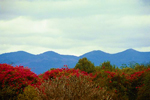 |
| Ngong Hills Forest Reserve | |
| |
The knuckle-shaped Ngong Hills make for a distinctive landmark, which can be seen for miles around Nairobi. The hills get their name from explorer, Joseph Thompson, who camped at the foot of them on his way to Uganda in 1884. The actual site was called ‘Enkong’u-e-nchorro-emuny’ but Thompson, unable to correctly transcribe this, simply dubbed the site ‘Ngong’, and the name stuck. The hills are revered by the Maasai people, who know them as ‘Oldoinyio Oloolaiser’, which means .. | |
| |
| | | |
| continue... | |
| |
| | | | |
|
| 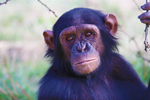 |
| Ol Pejeta Conservancy | |
| |
Situated between the foot hills of the Aberdares and the magnificent snow-capped peaks of Mount Kenya, the 110,000-acre private wilderness of the Ol Pejeta Conservancy boasts an astounding variety of wildlife, including all the members of the ‘Big Five’ and the endangered black and white rhino, leopard, elephant, buffalo and lion as well as the rare Grevy’s zebra and the Jackson’s hartebeest). It offers one of the highest wildlife densities in Kenya and a higher wildlife to acre ratio | |
| |
| | | |
| continue... | |
| |
| | | | |
|
| 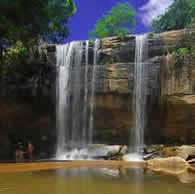 |
| Shimba Hills National Reserve | |
| |
Floating a misty-cool 400 metres above the palm-fringed beaches of Kenya’s glittering coastline, the Shimba Hills National Reserve offers a unique blend of wood-cloaked downs, wandering elephant, breeze-fanned hills, plunging waterfalls, liana-strung jungle and the primeval stillness of one of the last remaining coastal rainforests on earth. Famed as the only Kenyan habitat of the rare and magnificent sable antelope, this unique Reserve also commands panoramic vistas over the ... | |
| |
| | | |
| continue... | |
| |
| | | | |
|
| 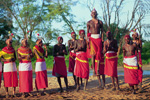 |
| Samburu National Reserve | |
| |
Uncompromising and rugged: Uncompromisingly rugged and vividly beautiful, Samburu is essentially a lava plain theatrically punctuated by dry riverbeds (wadis), steep-sided gullies, rounded hills and harsh outcrops of ancient basement rocks, which form into isolated inselbergs. Roughly in its centre rises the stark outline of Koitogor Mountain, and 30 kms beyond its northern borders rise the towering red granite walls of Mount Lololokwe (1,853 m). | |
| |
| | | |
| continue... | |
| |
| | | | |
|
|  |
| Lewa Wildlife Conservancy | |
| |
The Lewa Wildlife Conservancy, just north of the equator and gently hollowed from the massive flanks of Kenya’s highest mountain, is a 55,000-acre disc of savannah grassland, arising around a vivid-green serpent’s eye of a swamp, that offers sanctuary to some of the most threatened creatures on planet earth. Scored by lush valleys, skirted by dense forests, horseshoed by dark mountains and presided over by the glittering diadem of Mount Kenya, it is also one of ... | |
| |
| | | |
| continue... | |
| |
| | | | |
|
| 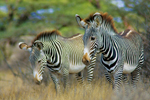 |
| Shaba National Reserve | |
| |
The 'Born free country'
Shaba National Reserve is one of a member of three reserves, (Samburu, Buffalo Springs and Shaba) which lie to the north of Isiolo. All lie along the banks of the Ewaso Nyiro River and are uncompromisingly rugged yet vividly beautiful. Shaba (once the home of Joy Adamson of ‘Born Free’ fame, and famous for its large prides of lion), offers virtually guaranteed wildlife encounters. | |
| |
| | | |
| continue... | |
| |
| | | | |
|
|  |
| Tana River Primate Reserve | |
| |
Relics of an ancient forest, the last home of two endangered primates species. The reserve, known locally people as Mchelelo, was formed to protect the crested mangabey monkey and the Tana River red colobus. It is one of the last remaining relics of the once massive Central African Lowland Rainforest, isolated from the rest of the forest during the seismic eruptions that caused the formation of the Rift Valley. | |
| |
| | | |
| continue... | |
| |
| | | | |
|
|  |
| Lake Kamnarok and Rimoi National Reserve | |
| |
The ‘Grand Canyon’ at the end of the world: Shimmering in the heat of the spectacularly beautiful but seldom visited Kerio Valley, which furrows the furthest reaches of the Northern Rift Valley, lie the little-known reserves of Lake Kamnarok and Rimoi. Twin sectors of the same eco-system, they are divided both by man and nature: the broad brown reaches of the Kerio River divide them physically, and the boundaries of the Baringo and Keiyo County Councils define ... | |
| |
| | | |
| continue... | |
| |
| | | | |
|
| 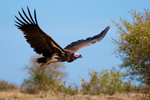 |
| Lumo Community Wildlife Sanctuary | |
| |
The Lumo Community Wildlife Sanctuary lies at the heart of the Tsavo eco system, surrounded by Tsavo East and West national parks and the Taita Game Sanctuary. It is composed of three group ranches (Taita, Lualenyi, Mramba and Oza), all of whom have elected to pool their natural resources in the interests of sustaining this unique wilderness area. The area is a vital wildlife corridor for the animals of Tsavo East and West, it is also an ancient elephant migratory route. | |
| |
| | | |
| continue... | |
| |
| | | | |
|
| 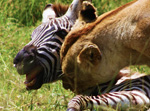 |
| Masai Mara National Reserve | |
| |
World renowned for the breathtaking spectacle of ‘the greatest wildlife show on earth’, the awe inspiring annual migration of the wildebeest, the Mara is Kenya’s most visited protected area. Technically an extension of Tanzania’s renowned Serengeti National Park, the Mara constitutes only 4% of the entire Serengeti ecosystem but its rolling grasslands, meandering rivers and towering escarpments offer one of the world’s most rewarding and evocative wildlife arenas. | |
| |
| | | |
| continue... | |
| |
| | | | |
|
| 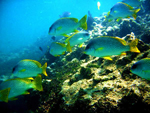 |
| Malindi/Watamu Marine Parks | |
| |
A unique complex of marine and tidal habitats, the Malindi and Watamu marine parks cover an area 30 km long and 5 km wide, and stretch from just south of Malindi town southwards to beyond the entrance to Mida Creek. Africa’s first marine park and one of the world’s last great natural marine reserves, Malindi Marine and its sister waterworld, Watamu Marine offer protection to one of the world’s most famous coral reefs. | |
| |
| | | |
| continue... | |
| |
| | | | |
|
|  |
| Mugie Wildlife Conservancy | |
| |
Mugie is one of the core study areas for the Laikipia Predator Project, a research study aimed at improving the conservation of large carnivores throughout Africa. Across most of Africa, people have eradicated predators such as lions, wild dogs and hyenas, largely because these animals are a threat to livestock. With human densities rising, even predators living inside national parks are threatened as reserve border areas are developed. Laikipia District is one of the few areas where people, livestock and predators attempt to co-exist. | |
| |
| | | |
| continue... | |
| |
| | | | |
| | |
| | |
| | |